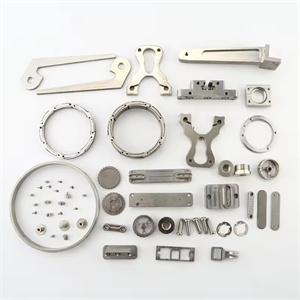Black Oxidation Treatment Of CNC Milling
The black oxidation treatment of CNC Milling, also known as blackening treatment or blackening process, is a chemical process that forms an oxide film on the surface of a metal. The following are the detailed steps and explanations for this processing:
Cleaning and preparation:
Firstly, thoroughly clean the parts processed by CNC Milling to remove surface oil stains, impurities, and oxides. This is usually achieved by using an alkaline solution for degreasing and cleaning, followed by rinsing off any remaining alkaline solution with distilled water.
Rust removal/pickling:
If there are rust or oxide stains on the surface of CNC Milling Parts, they need to be soaked in an acid solution, such as a sulfuric acid solution with a concentration of 10-15%, at a temperature of 70-80 ℃ for about 30 minutes (steel parts with light corrosion can be soaked for 20 minutes, while those with severe corrosion need to be soaked for more than 40 minutes). This step is to thoroughly remove impurities from the surface of the parts and prepare for subsequent oxidation treatment.
Oxidation treatment:
Put the cleaned and rust removed CNC Milling Parts into an oxidizing agent, usually an alkaline chemical solution containing sodium hydroxide, sodium nitrite, and trisodium phosphate. At an appropriate temperature (usually low temperature, about 350 ℃ for blackening treatment), these chemical components react with the metal on the surface of the part to form a black oxide film. This process is also known as blackening or blueing treatment.
The process temperature and time for blackening treatment vary depending on the type of material and the required thickness of the oxide film. Usually, the immersion time is 50-80 minutes. High carbon steel with high carbon content has a faster oxidation rate and a shorter immersion time; Low carbon steel with low carbon content has a slow oxidation rate and requires a longer immersion time.
Cleaning and drying:
After oxidation treatment, remove the parts from the oxidizer and thoroughly clean them to remove surface residues and unreacted chemicals. Then, dry the CNC Milling Parts to prevent rusting during subsequent processing.
Post processing:
As needed, post-treatment can be applied to the oxidized CNC Milling Parts, such as oil, wax, or paint, to further enhance their corrosion resistance and wear resistance, and improve their appearance.
Inspection:
Finally, inspect the processed CNC Milling Parts to ensure that their surface quality, uniformity of oxide film, and thickness meet the requirements.
Through the above steps, the black oxidation treatment of CNC Milling can form a uniform and dense black oxide film on the metal surface, significantly improving the corrosion resistance, wear resistance, and appearance quality of the parts.
